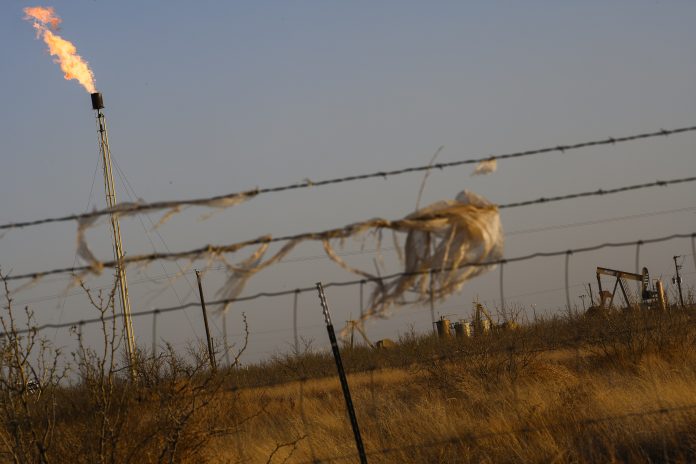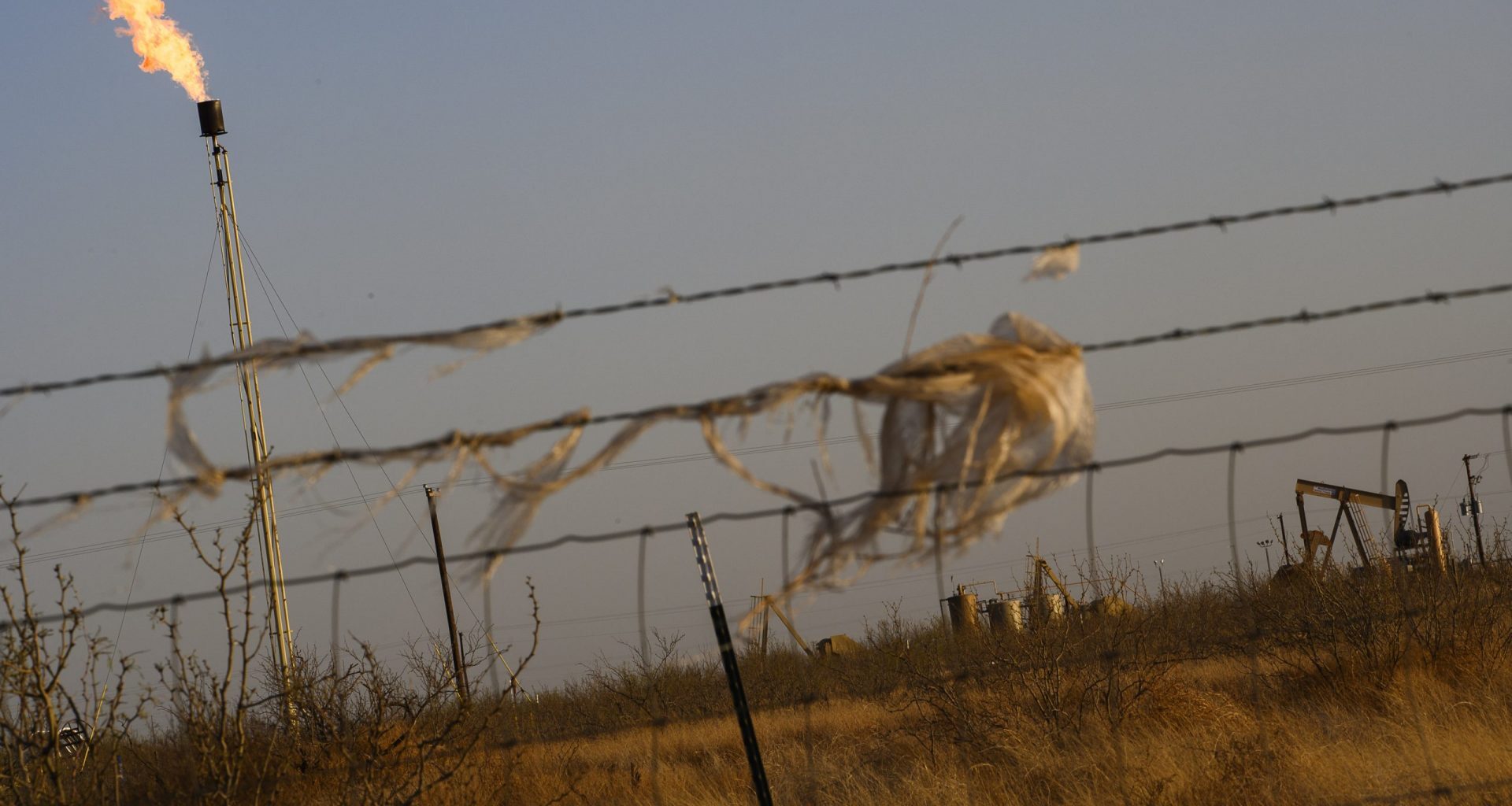 A flare burns off excess natural gas Friday, April 8, 2022, in Midland, Texas. (Odessa American/Eli Hartman)
A flare burns off excess natural gas Friday, April 8, 2022, in Midland, Texas. (Odessa American/Eli Hartman)Bone-chilling winters in the United States and Europe and the resultant draw-down of natural gas storage levels have raised producers’ optimism that the recently improved gas market will stay on the chipper side after a couple of very bleak years.
Odessa oilman Kirk Edwards and Waco economist Ray Perryman say all the signs say the market is going nowhere but up in the Permian Basin.
“Due to the cold weather across the U.S., storage levels have dropped significantly, leaving inventories at lower-than-normal levels compared to previous years,” Edwards said. “This reduction in supply is helping drive prices higher.
“U.S. liquefied natural gas exports are hitting record highs with new facilities coming online and more in the permitting phase. This is boosting demand for U.S. natural gas, particularly from overseas markets.”
Edwards said Europe, facing its own cold weather challenges, is increasingly turning to the U.S. for LNG imports.
“Their need to replenish storage levels will keep demand for U.S. natural gas high in the coming months,” he said. “Announcements of $500 billion in new data center investments in Texas will drive significant local energy demand.
“With natural gas production abundant in the Permian Basin, it’s likely that much of this new power demand will be met by Permian-produced natural gas.”
With these combined factors, Edwards said, the outlook for the U.S. natural gas industry in 2025 looks exceptionally strong, marking a major turning point after a challenging few years.
The gas price recently rose to the $4 per thousand cubic feet range after holding well below that in 2023 and ’24.
Perryman said prices in the natural gas market have clearly improved with storage drawdowns and cooler weather with positive effects on the Permian Basin.
“The ongoing development of the LNG market and the resulting ongoing source of additional demand is also a factor, especially as more facilities come online,” Perryman said. “However, in the Permian Basin one of the most crucial aspects of improving prices is the addition of pipeline takeaway capacity.”
Until recently, he said, prices at the Waha Hub had been negative most trading days with producers paying to have gas taken.
“Since much of the gas produced in the region is associated gas that occurs along with oil production, the situation is somewhat different in that production decisions are driven by the price of oil as well as gas,” Perryman said. “Moreover, much of the capacity was absorbed by ongoing contracts, leaving very little ability to accommodate variable daily needs.
“Until recently there was generally more gas than pipeline space. The addition of the Matterhorn Express Pipeline last fall has improved the situation markedly with prices not going back into negative territory since the addition of the much-needed capacity, although it is still generally lower than in most parts of the country.”
While gas prices in the Permian Basin are clearly affected by international factors, he said, there are also specific issues in the region.
“More pipelines are scheduled to come online and with that additional capacity prices should continue to stabilize and be more in line with the overall market,” Perryman said.
Related
